The amazing world of Slavic folklore and mythology ( + Original Haiku)
Guys if you are into short posts, please skip on.
This post is 10 - 15 minutes read, at the end you can find an original haiku on the matter.
Before we dive in into the amazing world of the Russian folklore, let us understand the slight difference between mythology and folklore.
Mythology, in my understanding is the old parent of a nation’s religion. It paints for us the picture of a certain world, which has elements of religion, art, and practical and scientifically related roots.
Folklore is very similar, but, it is a nation’s collective creation. It’s an artistic, somewhat chorographical representation. It is unlike mythology, a creation of a nation with no books and paper.
The art and the language of people who couldn’t write.
Certainly folklore developed from mythology.
The main difference (in the words of a mythological professor Mitchkovskaya) is that a myth – is a sacred belief of a nation, whether folklore is it art.
And Old Russian saying:
A fairytale certainly is a lie, but it carries a lesson across with it to be learnt from
The Russian folklore came to us from a long time ago, and its authors are never to be known.
It is by no discussion a part of Slavic folklore (an amazingly rich world) and contains many interesting heroes and villains, songs and fairytales.
In this part, I would like to discuss some of the most interesting characters of the folklore (and I’m sure even Russian readers will be surprised by some of the information I will share with you).
So first is the well known to Russian small children - Baba yaga:
Most of young kids (after watching old Soviet cartoons) believe that she is a mixture of evil, who cooks young children in her stove (making her a cannibal), and a somewhat funny looking old lady who flies on her broom and leaves in a wooden house in the forest, that stands on a chicken leg.
In part of the folklore, she is somewhat way more evil! Her house was surrounded by human bones. She flies in a wooden mortar, using a beater to speed up and her broom to hide her own tracks.
She is described to be the “top of all bad behavior”, relating to that she doesn’t follow the rules; she is evil and will cheat you into death.
She is old and ugly with a big long “mount broken” nose. She lives like the cartoons show us in a wooden house, which is stood on a leg similar to that of a chicken.
To understand her more, we need to understand that she is the “lady of the forest” and the guardian of the other world. She takes souls to the underworld and sees them to get there.
At the same time she is the guardian of animals at the forest and can cast spells.
She is important to the folklore heroes, as she can get them into the underworld and then help them to get out by helping them to cleanse and feeding them.
An important point is that a real hero must ask for the food himself, those showing that he is not afraid of her and that he is real.
A saying of hers:
I can smell Russian spirit
Leshy
On the most confusing characters. He is very humanoid but is able to assume any shape and size he wishes.
He has lots of names that people gave him in different parts of the Slavic folklore, but most means “something to come out of the forest”.
He is the spirit of the forest and certainly is connected to the “other side” of the world. He can become visible in a form of an animal, a tree or even someone you might know.
He likes gambling and playing cards. And most tales where someone is abducted by the Leshy have a happy ending.
He is known to be around mostly during the summer time, and in the winter he disappears.
It is a big debate on which side he is – the good or the evil. On one hand he protects the forest and his deeds are only towards someone who did something bad to the forest.
On the other hand, he does do evil and bad deeds.
If you were lost in the forest it meant that it’s the work of the Leshy.
But he also helped those who left his offerings.
He is known for kidnapping young babies and swapping them for a piece of wood. And for stealing cows and goats and dragging them into the forest.
It is mostly agreed upon, that his deeds had more of a joking side, like sounds of laughter in the forest or hands clapping.
It is agreed in the folklore (and to somewhat believed upon today), that upon entering the forest you must ask his permission and by leaving, leave a present.
Koschei
Or Koschei the undead, as he is known to the kids in the cartoons.
His death was portrayed to be hidden in a far away land on a tree in a trunk. Inside which was a goose, inside which was a rabbit, inside which was an egg and inside that egg was a needle, which when broken led to his death.
In the folklore he is a king or a sorcerer, sometimes riding a horse. He looks somewhat like a leaving skeleton.
He likes to steal brides and we know from tales that water gave him unbelievable power.
Well asides form the fairy tales he is believed to be somewhat but a “black god”. Referring to his evil side. He comes at night, representing the dark side.
His eyesight is said to be the most terrifying thing one can experience. Stone cold filled with dark emptiness.
It is interesting to point out that some relate him to the son of the goddess of land. Meaning that with any death he brings, a person’s soul has a new beginning and basically it represent the life circle.
Kikimora
This one is defiantly representing the bad side of things.
If you meet her – you are in trouble.
It is a female home spirit, but an evil one, causing all sorts of trouble in any building she might inhabit.
She is a small, old, ugly, and wears ripped clothes. All this refers to her as being an earth dwelling.
She can be invisible and is actually tiny and is scared of being outside.
It is wide spread, that she will only inhabit a house, in which a child died.
At first it might seem like she only causes small havoc, like tickling small kids to crying in their sleep or opening doors, breaking things and so on.
But in fact she is far more evil and can strangle people.
She causes all sorts of bad things, referring to a possessed house. And can get it burnt down.
A lot have said that most of these deeds can be easily explained by people having pets or a mouse in their home.
Domovoi
Also a house sprit, but mostly good. He protects the house. is a well known friend of the cat in a house.
A lot of people today buy handmade dolls in the form of a Domovoi and keep them in the kitchen on an upper shelf (he is said to like heat) to protect the house.
He is known to cause some havoc, like breaking things and so on but will not cause harm to the owners.
In fact in many tales he develops a friendly relationship with the owners and can help around the house with chasing burglars or even evil away.
He is fed by the family, mostly leaving him a plate of milk or cookies at night in the kitchen.
When people moved house they have called him to move with them, usually referring to him as the “owner of the house”.
Vodyanoi
Another interesting and somewhat confusing character. In cartoons he is portrayed to help heroes and is the king of swamps and frogs. A somewhat funny looking old man.
In folklore he is the root of bad beginnings and evil...
He looks somewhat like an old manly mermaid with a fishtail. Likes to wear clothes and has a moustache.
He could turn into any water animal or even a drowned man.
It is believed that he likes offerings in the form of a live human being. So in the north it was believed that people caught strangers that were lost and brought them as offerings to the lake where the spirit lived. In turn the Vodyanoi helped them with fish and didn’t touch the water mills.
It is said that he is in constant fight with the Domovoi, as he doesn’t like good spirits.
He drowns people and takes to his harem girls and women that have drowned (only if they were born again). He is also known to drown people so they can keep him company (as he gets tired of fish and other swamp creatures).
If a person that drowned had marks on him, it was said that it is the proof that the Vodyanoi did it.
Bies
More of a mythological creature. Basically a demon or an evil spirit.
These creatures were brought to fame by Dostoyevsky – a book anyone must read – Biesy.
The word itself takes root from the same ancient Slavic word “to be afraid of”.
So we can clearly see why I include those creatures here. Before religion adopted them for possessed people, they were creatures in the folklore.
In fact, there are at least a few tens of types of Biesy. Some are good and some are pure evil.
The usual difference between the demonic creatures the church paints for us and those in the folklore is the fact that one could make a deal with such a creature.
He represents evil, but he can do other deeds too.
Ironically those creatures come to us as people of other belief in folklore.
They can cause all sorts of trouble starting with physical pain and going into hallucinations.
Lady Midday
Or Poludnitza in Russian.
A female spirit that represents the bad, that midday can bring. The point is border time.
She can turn into plants or even into a mermaid. She is part deity part demon.
In Slavic tradition it was common to take a rest at midday after plowing, lady midday came to those who didn’t take a break.
She could make people fall asleep, and turn them into a Poludnitza in their sleep.
It’s interesting to note, that in the area that I live in, it was a tradition – NOT to sleep in midday, as the Poludnitza would make it worse for you during your sleep.
Rusalka
Best known as a mermaid to English speakers.
A much romanticized creature, but in fact one of the most dangerous in the folklore!
She comes as a young lady with a fishtail, usually in the summer time, appearing in small lakes. She is known to be an ex drowned woman or a girl. Her soul is forever captive to the evil spirits.
Some give Rusalka the role of the wife of a Vodyanoi, some say they have nothing to do with each other.
In any case, her point was to lure you and drown you in the water.
Once again it’s interesting to note that in some other cultures the Rusalka was always given a role of a good spirit. They made jokes (not always understood by humans), like throwing stones and putting fires out were people left the fire for a while.
And even took care of young children.
Regardless of whether good or bad, mostly all believed that if they saw a bunch of Rusalka playing, it was a sign for a great harvest.
The Russian folklore is full of hundreds (!) of different and starnge creatures, some more known than others. I outlaid the most known here.
From those folklores some might argue mythology was formed, then moving onto a religion and to fairytales that most kids know by today.
It is interesting to watch that heroes were added mostly on latter stages, when folklore already becomes a well known art of a nation (although that happens differently in the Greek mythology, where heroes are mostly part of the stories from the beginning).
Most folklore later gets interpreted as not only fairytales (in fact they come last), but as prose, ballads and poetry, which then moves onto literature.
I myself like to write poetry based on folklore, and I often do so when I get the muse (or should I say the spirit?).
Ghostly cold wind of the day
Summer dreams are gone.
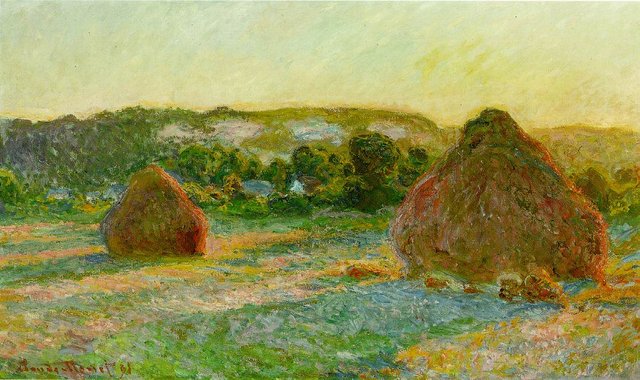
Let me know what you think in the comments and don’t forget to follow me @serejandmyself
Image Credit - 1 ; 2 ; 3 ; 3 ; 4 ; 5 ; 6 ; 7 ; 8 ; 9 ; 10 ; 11 ; 12 ; 13 ;
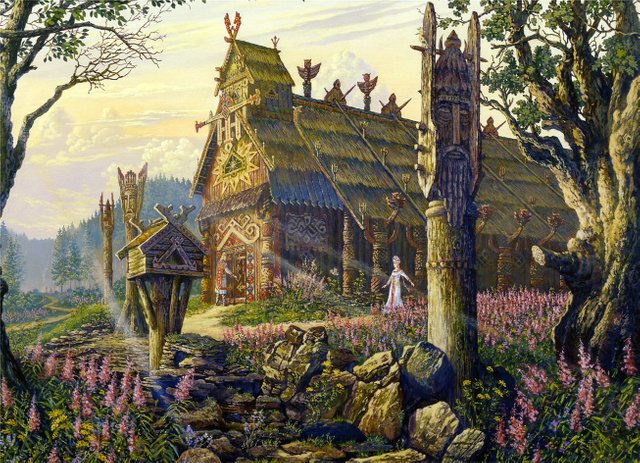
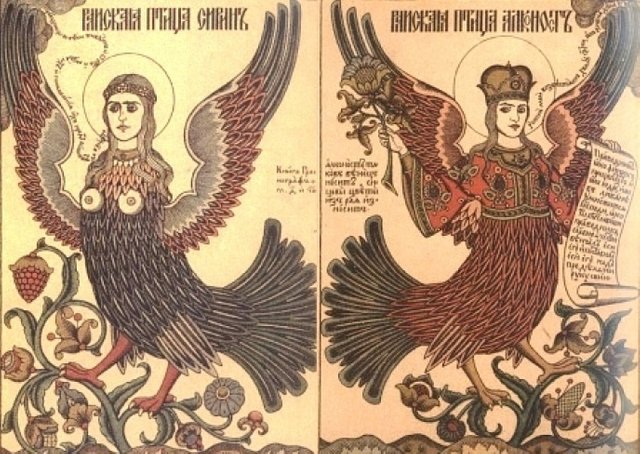
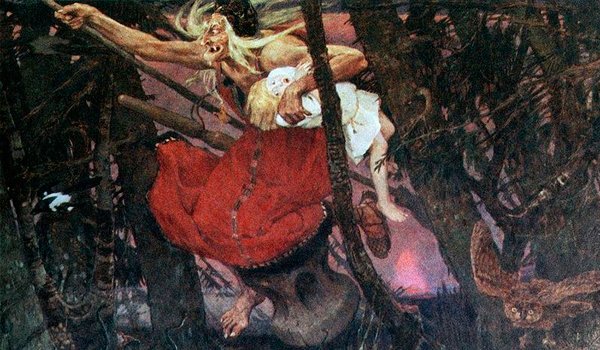
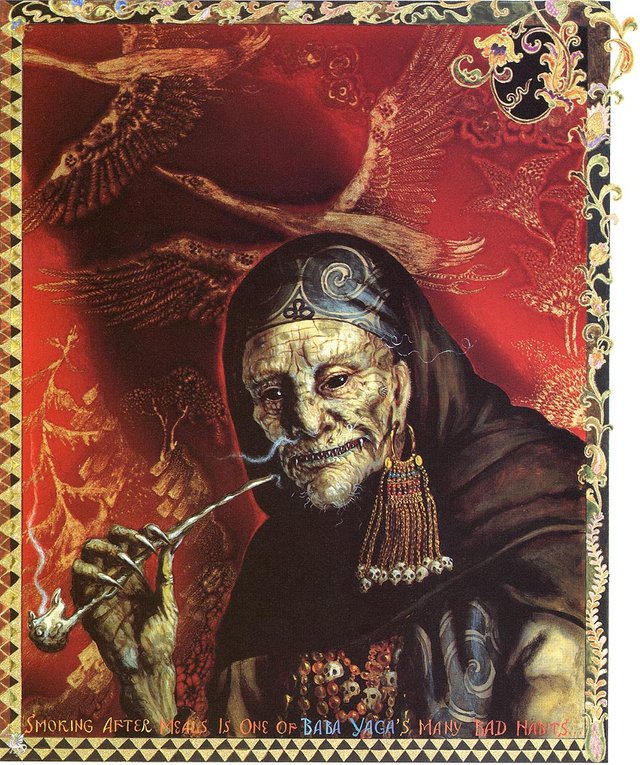
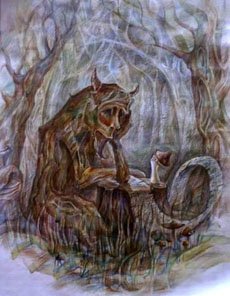
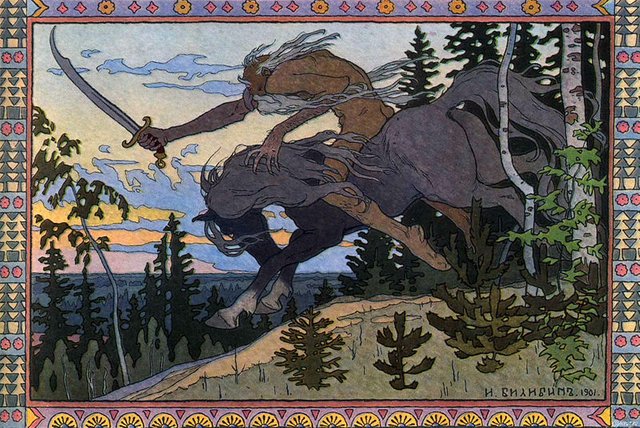
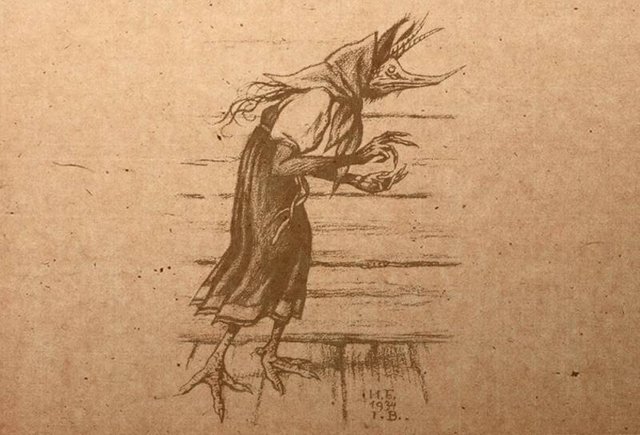
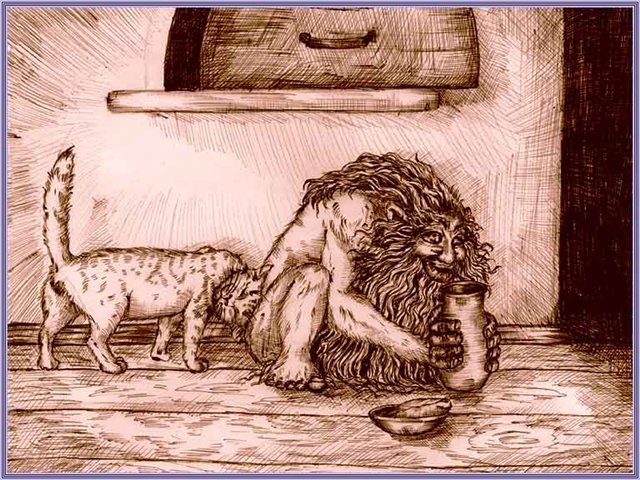
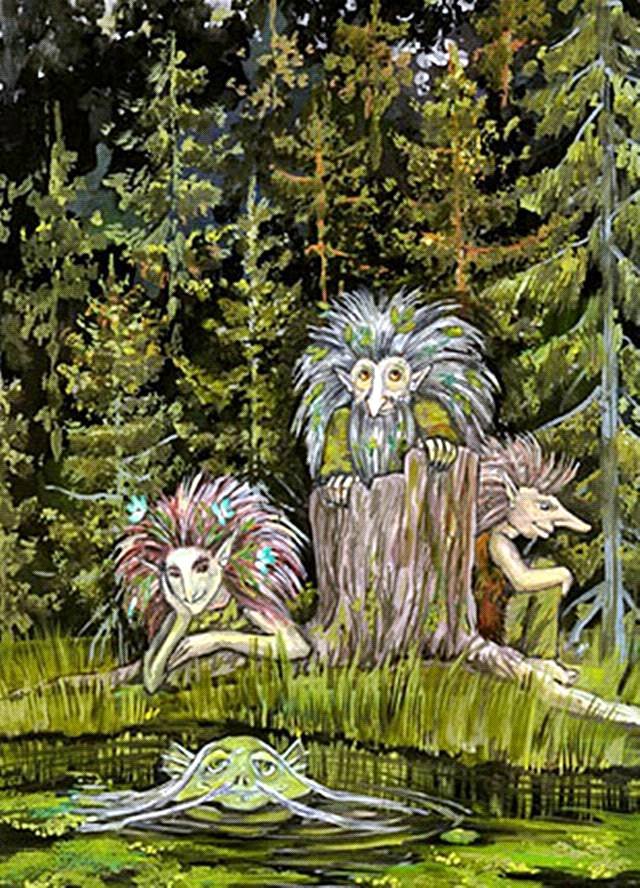
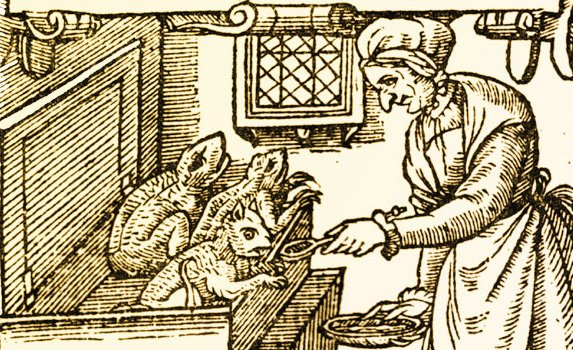

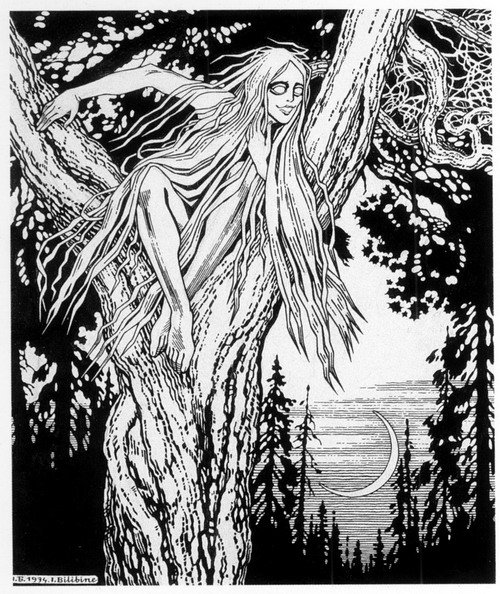
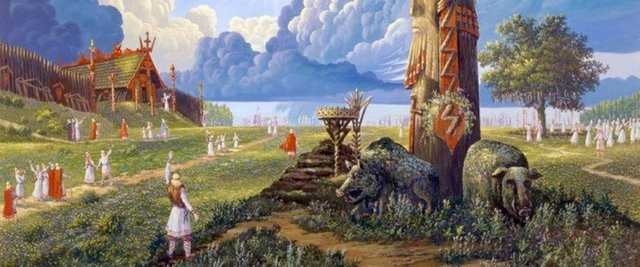
Very interesting, thanks for sharing!
Thanks for your comment
Славянских мифологических персонажей значительно больше - Велес, Ветер, Масленица и множество других. Отдельной категорией стоят всеми известные божества - Перун, Ярило, Стрибог, Даждьбог. Но среди Кикиморы, Бабы-Яги, Кащея, Домового и Лешего, не стоит забывать о Змее Горыныче, упоминания которого есть во многих сказках и фольклорных сюжетах.
Да, да, как раз об этом выше и написано )
Не нашел Змея Горыныча (:
great article. keep the work on
Thank you
Довольно необычно читать о героях русских сказок и легенд на английском) Но это хорошо, я вижу, что англоязычные граждане очень даже оценили!
Классный пост. Напоминает о детстве и любимых историях. Спасибо!
Bookmarked and saved for later read :-)
Please do )
I finally dod read it is is great :-)
Just scary enough and entertaining.
Some pictures gave me goose bumps (kikimora...)
thank for sharing , i love to read supernatural article
Awesome article!
мне кажется лучше всего отражены Бабы Ёжки и Водяной в мультике "Летучий корабль" - очень люблю его!!! )
А домовенок Кузя чего стоит )))) ААА! Вы прям в такую ностальгию меня!!! Спасибо! пошла искать мультики ))
Спасибо!
Thanks! I love folkore and mythology
Thank you!
cóż można dodać, kraje w środkowej Europie są po prostu przebogate kulturowo :)
All our countries have a very deep culture! Hope in Poland the folklor stories are simialr